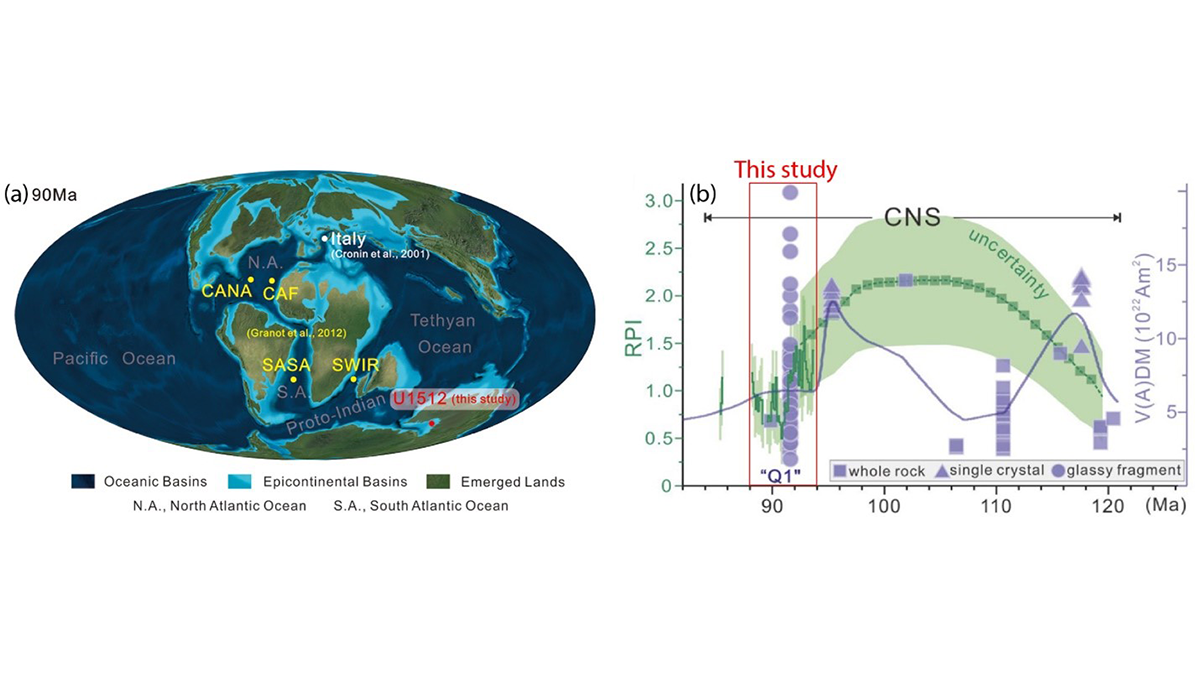Editors’ Highlights are summaries of recent papers by AGU’s journal editors.
Source: Journal of Geophysical Research: Solid Earth
The Cretaceous Normal Superchron spans a time period from 121 to 84 million years ago, during which the Earth’s magnetic field was stable and dominantly of a constant single normal polarity. This approximately 37 million-year superchron, also known as the Cretaceous quiet zone, appears as a unique geophysical feature and has been suggested to reflect a highly efficient state of the geodynamo and consistently strong geomagnetic field intensity.
Liu et al. [2024] provide a detailed record of measurements of relative paleointensity for a six-million-year continuous section of sedimentary rocks, from which a measure of the relative changes in the field strength during this time period was obtained. The results show considerable variations in field strength with the maximum and the minimum being a factor of 3. Integrated with the marine magnetic anomaly data, these results indicate that the magnetic field was strong during the middle of the superchron, whereas the onset and termination of the superchron are defined by a relatively stable but much weaker magnetic field.
These findings suggest that the geodynamo was more dynamic than previously thought and may provide clues concerning the origin, development and termination of geomagnetic superchrons. The study robustly documents a much more variable geomagnetic field during the Cretaceous Normal Superchron than acknowledged up to now, an important result that enables benchmarking geodynamo simulations for this time interval.
Citation: Liu, X., Li, Y.-X., & Richter, C. (2024). Salient changes of Earth’s magnetic field toward the end of Cretaceous Normal Superchron (CNS). Journal of Geophysical Research: Solid Earth, 129, e2023JB028104. https://doi.org/10.1029/2023JB028104
—Bjarne S. G. Almqvist, Associate Editor, JGR: Solid Earth

